There’s something undeniably satisfying about the transformative power of a good sauce.
Across the globe, many cultures elevate their meals with sauces and dressings that infuse bold flavors and signature touches. Think of creamy tzatziki enhancing Greek cuisine, rich hummus accompanying Armenian dishes, vibrant salsa topping off Mexican meals, or the comforting embrace of tomato sauce over Italian pasta. You get the idea!
Sauces are an essential element of cuisines worldwide. The perfect sauce can transform an everyday meal into a gourmet experience — especially when it’s made in your kitchen.
Store-bought dressings and sauces are often loaded with hard-to-pronounce additives and genetically modified ingredients that don’t serve your health. They can also come with more than the recommended daily allowance of sodium, saturated fat, and sugar if you don’t check the labels carefully. There can even be hidden dairy or fish, which is a problem if you suffer from allergies or are vegan.
So, if you’re looking to avoid these unsavory (pun intended!) ingredients, you may want to try your hand at homemade sauces and dressings. You’ll discover a new world of flavor and possibilities using wholesome, plant-based ingredients.
In this article, we’ll discuss how to make sauces and dressings, including key plant-based ingredients to try, uses, and storage tips. We’ll also include a step-by-step video tutorial to help you create your own delicious sauce or dressing.
Essential Ingredients for Plant-Based Sauces
When deciding on the sauce or dressing you want to create, start by thinking about the flavor profile you’re aiming for. Do the flavors of a specific cuisine complement your dish? For instance, if you’re preparing a grain bowl with bulgur and baked chickpeas, you might choose a sauce infused with spices like cumin, paprika, and cinnamon, which are staples in Moroccan cooking.
Ingredients for Texture
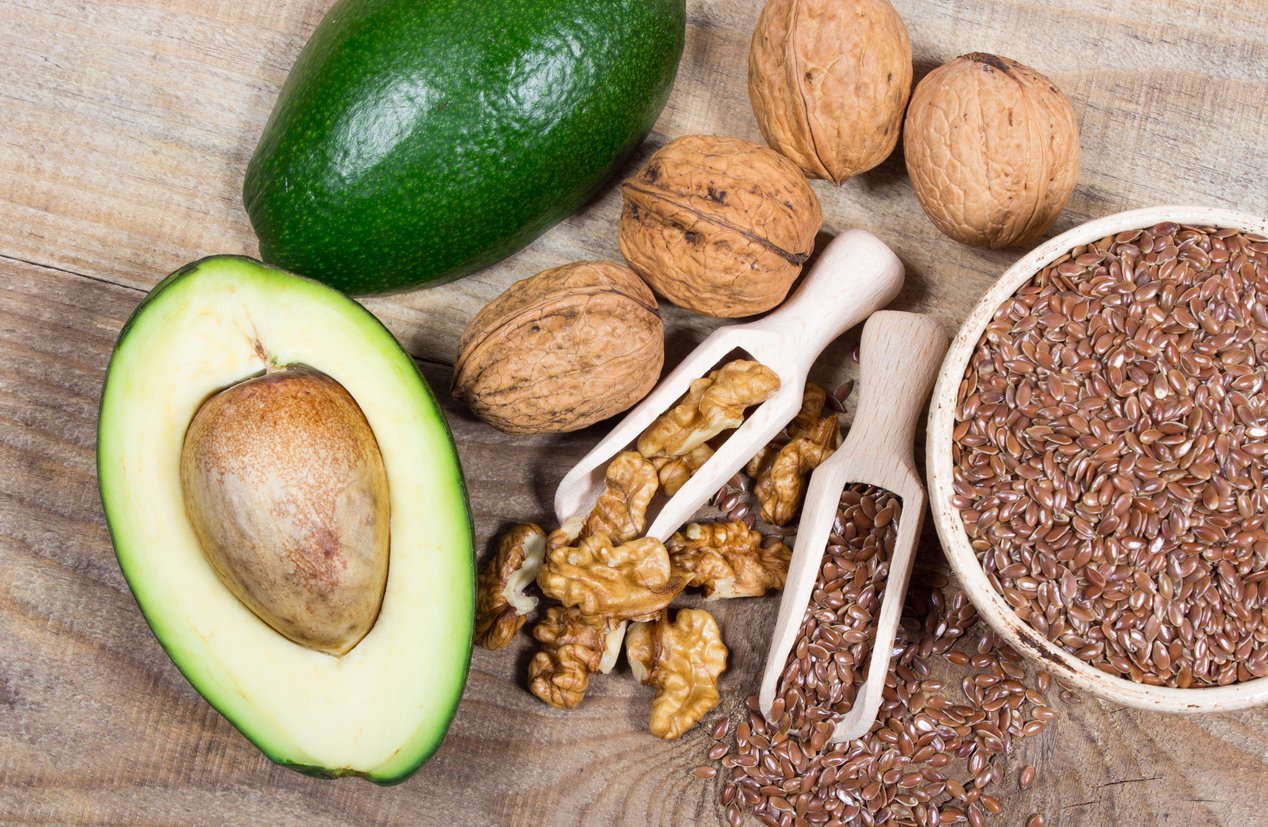
You might also consider the sauce texture. If your bowl has crunchy and crispy textures, you might find that a creamy sauce complements the crunch and crisp nicely.
Many store-bought sauces and dressings contain dairy to make them creamy. But plants can also create the most seemingly indulgent textures!
Examples of plant-based ingredients that transform into a creamy base include:
- Nuts and seeds: If you don’t have a high-speed blender, soak nuts and seeds for one to two hours to soften before adding them to your recipe.
- Cooked vegetables: Boiled or steamed potatoes, butternut squash, and cauliflower can all create succulent textures, as portrayed in this Cauliflower Squash Cheese Sauce.
- Legumes: Beans, lentils, and tofu can create a hearty sauce packed with protein and fiber!
- Avocado: Due to its healthy fat and fiber, avocado instantly becomes a satiating delight. It’s especially great if its green hue complements your dish!
- Plant-based yogurt and milk: These dairy-free ingredients can easily replace any sauce or dressing that uses the dairy version of each.
Adding just a bit of cornstarch, arrowroot powder, or tapioca starch can also help thicken your sauces without altering the flavor.
Ingredients for Flavor
Next, you’ll want to consider ingredients that will add flavor to your recipe.
Acidic ingredients, like vinegar, orange, lemon, or lime, can add a zing or zest to sauces and dressings.
To balance a recipe’s acidity, you may also want to add a little sweetness with maple syrup, fresh fruit, or date paste. This Blueberry-Balsamic Walnut Dressing is a good example of this combination with blueberries for sweetness and balsamic vinegar for acidity.
For a list of the best and worst sweeteners, visit our article on sugar substitutes.
You can further enhance the flavor of homemade sauces and dressings with herbs and spices. In the dressing example above, we added tarragon for a touch of pungency. It’s an elegant little herb that packs a fun punch!
Other fresh herbs to consider include basil, cilantro, parsley, and dill. They can all bring life to a sauce or dressing whenever you feel “something is missing.”
If you’re cooking ingredients before making them into a sauce, add the fresh herbs toward the end of cooking to preserve their freshness.
Dried spices such as cumin, paprika, turmeric, and coriander add depth and complexity to sauces and dressings. Get curious, play around with them, and don’t be afraid to experiment!
If you find yourself following a recipe that uses oil and you’d like to opt for whole food fats instead, consider using avocado, nuts, seeds, or tahini in place of oil. Since they’re all rich in healthy fats, these ingredients can simulate that same creamy mouthfeel with a nuttier flavor.
Equipment You May Need To Make Sauces and Dressings
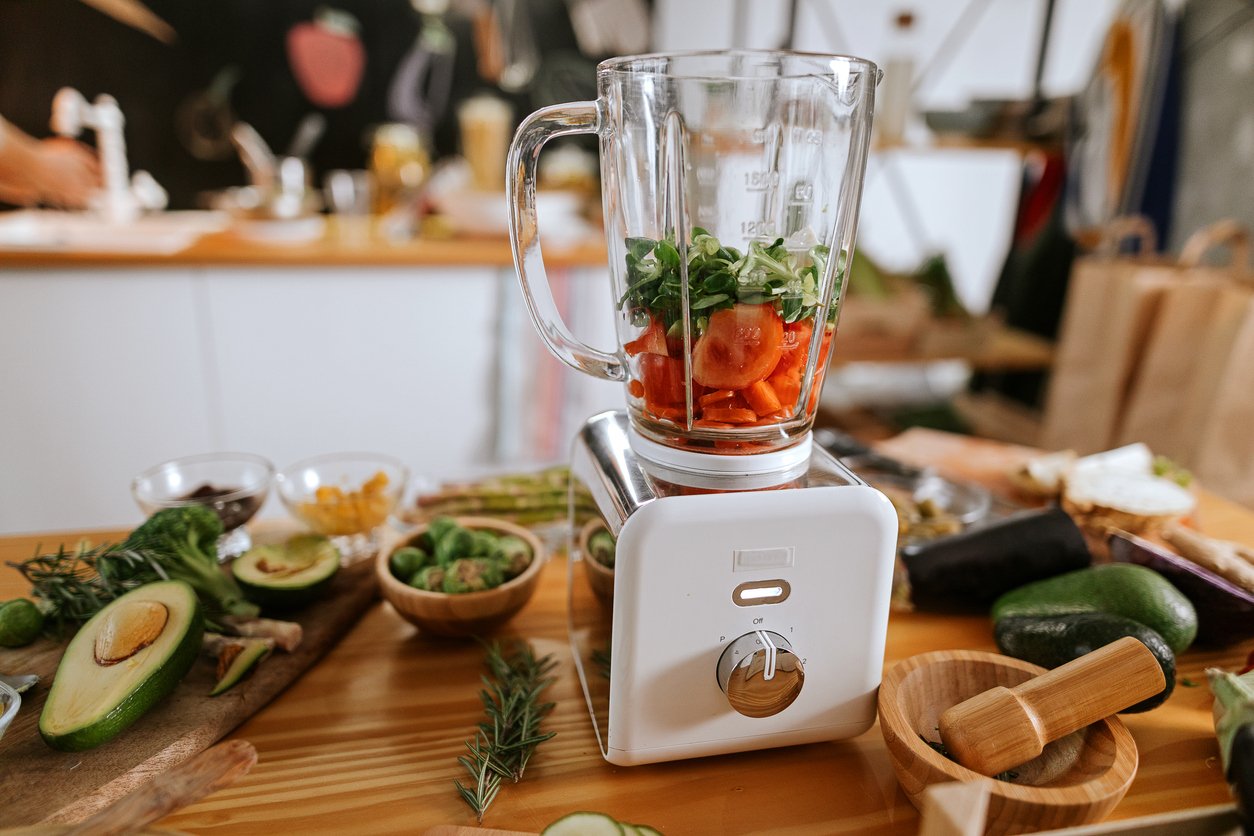
To create homemade plant-based sauces and dressings, you’ll need a few basic kitchen appliances.
Blending sauces and dressings is best done using a regular blender, high-speed blender, food processor, or immersion blender.
For dressings or thinner sauces, you might also be able to get away with just a mixing bowl and whisk.
Using Sauces and Dressings in Your Cooking
Next, you’ll want to use every last bit of those nourishing sauces and dressings you just made!
There are many ways to use sauce to elevate the flavor and nutritional value of your dishes:
- Use sauces over noodles, grain bowls, and stir-fry dishes.
- Drizzle dressings on top of salads and steamed veggies.
- Marinate tofu, tempe, or mushrooms before grilling.
- Serve baked sweet potato fries or squash chips with a dipping sauce as an appetizer.
- Spread thicker sauces on pizzas, sandwiches, and wraps.
- Smother pasta noodles in sauce to make mac and cheese.
- Pour sauces into casseroles to make them rich and creamy.
Watch the video below to discover how to make sauces. Discover why sauces are so fabulous, the benefit of using whole food fats over oils, how to create your own delicious Lime Jalapeño Sauce (option for no spice!), and how this sauce offers boatloads of nutrition.
https://www.youtube.com/watch?v=BH32-v9AMyQ
Storing Homemade Plant-Based Sauces and Dressings
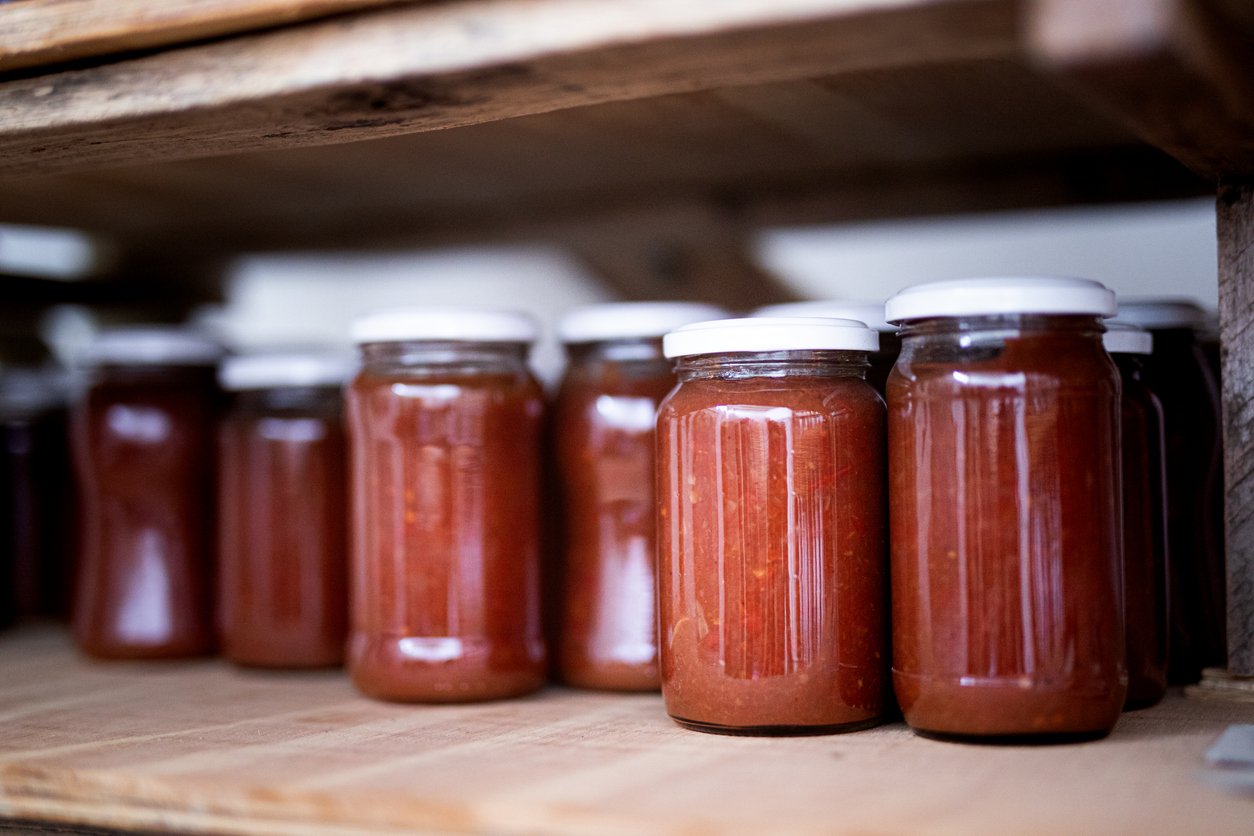
We recommend keeping one or two sauces on hand at all times, which will help you quickly put together a plant-based meal.
While many homemade sauces are best used fresh (especially those containing fat-based ingredients), many can be stored for later use. Store sauces and dressings in an airtight container, like glass mason jars (we love reusing old condiment jars for this purpose), or in refrigerator- and freezer-safe non-toxic containers.
Depending on the ingredients, many sauces can last three to five days in the refrigerator and up to six months in the freezer.
Some sauces and spreads, like tomato sauce or salsa, can also be canned. Here’s a handy canning guide from The National Center For Home Food Preservation.
Canned sauces typically last at least one year or longer. When storing, note the date it was made to determine your “best by” date.
Plant-Based Sauce and Dressing Recipes To Make from Scratch
Spice up your meals with these three homemade plant-based sauces! Whether you’re looking for something fresh and herby, rich and creamy, or bold and zesty, these sauces are the perfect companions to a variety of savory dishes. They’re easy to whip up and bring a burst of flavor to everything from grain bowls and salads to sandwiches and roasted veggies.
Get ready to make these versatile sauces your new kitchen staples for delicious, plant-based goodness in every bite!
1. Roasted Red Pepper Sauce
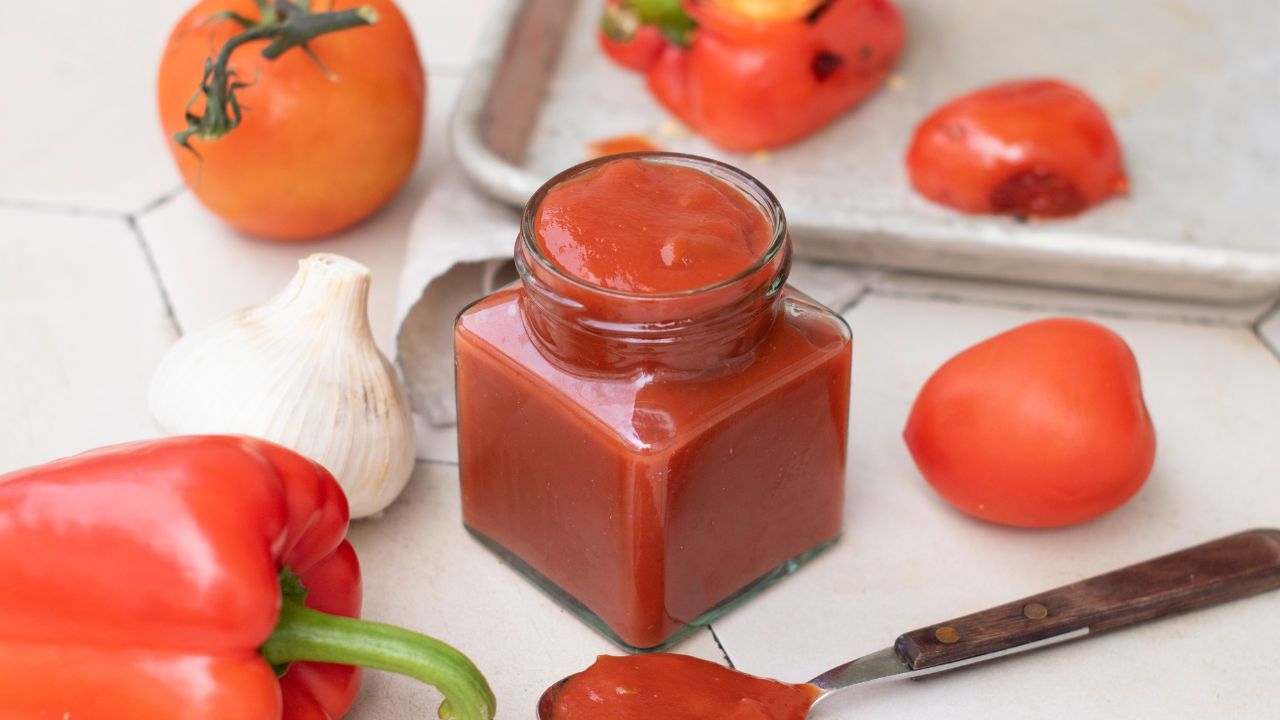
This sauce may take a little longer than your average five-minute sauce, but we’re here to tell you it’s worth every minute! Thanks to the roasted red peppers, it also makes a tasty alternative to traditional tomato sauce. So try it with your favorite whole-grain pasta or as part of an Italian casserole dish. This “cheesy” roasted red pepper sauce is also delicious poured over a grain bowl, topped on spaghetti squash, or drizzled over steamed veggies!
2. Kale Walnut Basil Pesto
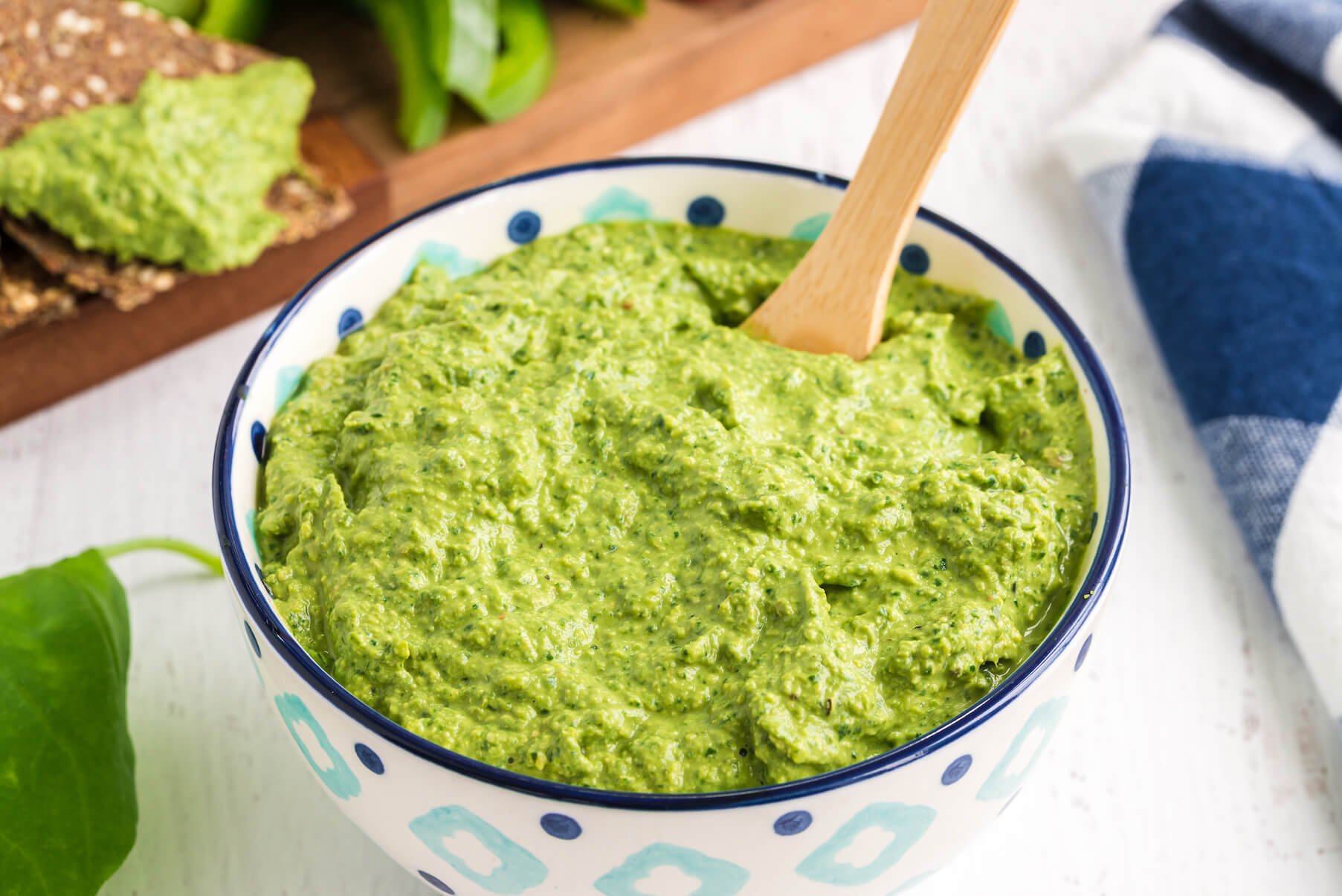
Kale Walnut Basil Pesto is bound to be your new go-to sauce, adding a fresh, herby kick to all your favorite dishes! Spread it on hearty veggie sandwiches, mix it with legume-based pasta, or use it as a luscious dressing for salads and grain bowls. With just a few simple ingredients and only 10 minutes, you’ll have a vibrant, zesty sauce ready to brighten up any meal in no time!
3. Tzatziki Sauce
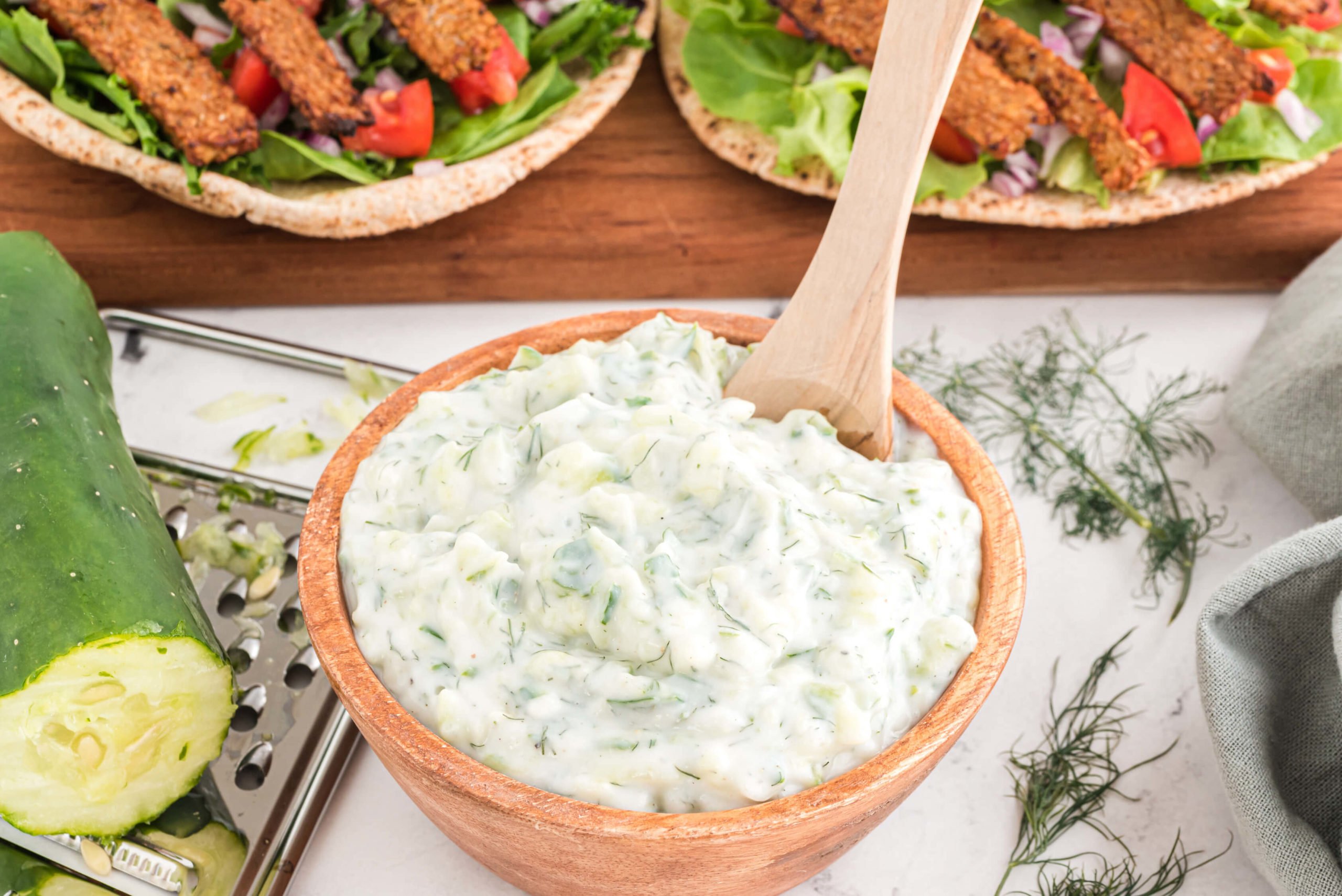
Creamy sauces get a plant-based makeover with this easy, dairy-free Tzatziki Sauce. Combining refreshing cucumber with creamy plant-based yogurt, it’s a flavorful and nutritious addition to any dish. Whether you’re drizzling it over grain bowls, pairing it with grilled tofu, spreading it on avocado toast, or getting creative with other dishes, this sauce is a breeze to make. With just a handful of simple ingredients — cucumber, plant-based yogurt, lemon juice, garlic, and your favorite herbs — you’ll have a delicious, homemade sauce ready to elevate your meals in a flash!
Add Sauces to Your Culinary Repertoire!
Homemade sauces and dressings offer a healthier alternative to store-bought options. Using wholesome, plant-based ingredients allows you to control the quality of what goes into your food and, therefore, into your body. By embracing homemade alternatives, you’ll discover a world of flavorful, nutritious possibilities that cater to your dietary preferences while elevating your plant-based culinary experience.
Tell us in the comments:
- Which of the three sauces do you want to make first?
- Can you share an experience where a sauce leveled up your dish?
Featured Image: iStock.com/nesharm



